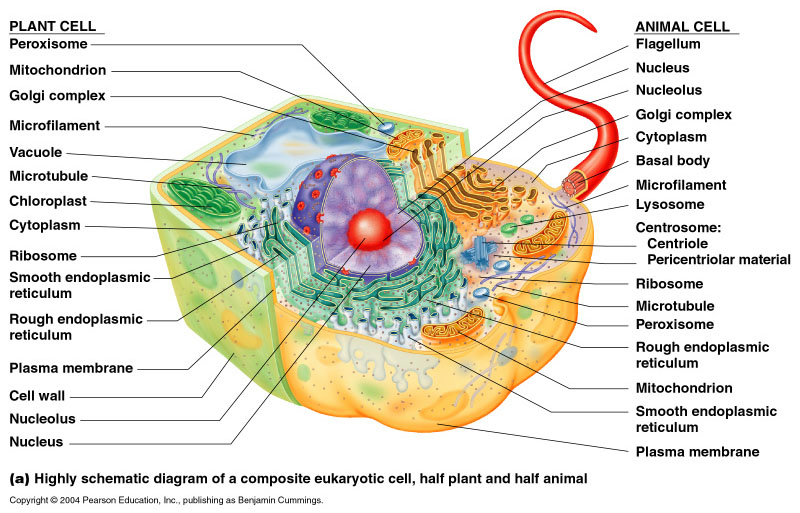Sponsored Links
THE EUKARYOTIC CELLS (A Short Lecture)

The cell is the basic functional unit of an organism, and is generally divided in to two major groups: the eukaryotic cells and the prokaryotic cells. This article will give focus on the former since this group of cells can be found in majority of all known organisms, particulary those under the Kingdoms Animalia, Plantae, Fungi and Protista.
The term “eukaryotic” came from the greek words “eu,” which means true, and “karyon,” which means nucleus. Thus, the popular definition of eukaryotic cells: those with “true” or distinct nucleus
General Characteristics of the Eukaryotic Cells
-
The most evident characteristic of Eukaryotic Cells is the presence of a Nucleus, covered by a Nuclear Envelope. This envelope is a double membrane which separates the Nucleus from the Cytoplasm. The Nucleus, by the way, “contains almost all the hereditary information of the cell.” (Tortora et.al, 1995)
-
Aside from the Nucleus, other organelles of the Eukaryotic Cells (Mitochondria, Ribosomes, Lysosomes, Chloroplasts, etc.) are also bounded by membranes.
-
The DNA of Eukaryotic Cells are “bound up with special proteins (histones) to make chromosomes.” (Waggoner, 1994)
-
The outer covering of the cell, in most eukaryotes, is termed Plasma Membrane , a phospholipid bilayer. I said “in most eukaryotes,” because in photosynthetic eukaryotes, though they also possess a Plasma Membrane, their outer covering is the cellulose-rich Cell Wall.
-
Eukaryotic Cells are generally larger than the Prokaryotic Cells. The former measures 10-100 microns in diameter; while, the latter measures 0.2-2.0 microns in diameter.
-
In the case of unicellular eukaryotes, the movement of the cell is aided by Cilia or Flagella, which are composed of complex network of multiple microtubles.
-
Cellular Reproduction or Division is through Mitotis and Meoisis .
Below is a short , but concise video-lecture about the Eukaryotic Cells:
Randolf Flores, the contributor, is a graduate of Bachelor of Science Major in Biology at the Far Eastern University, Manila. He is currently taking up Master of Arts in Science Education at the Rizal Technological University, Mandaluyong City.
References:
Lye B. (2003). Eukaryotic Cells. Retrieved June 7, 2014, from http://biology.kenyon.edu/HHMI/Biol113/eukaryoticcells.htm
Rollins D. and Joseph S. (2004). Comparison Between Prokaryotic and Eukaryotic Cells. Retrieved June 7, 2014, from http://www.life.umd.edu/classroom/bsci424/BSCI223WebSiteFiles/ProkaryoticvsEukaryotic.htm
Tortora G., et al. (1995). Microbiology: An Introduction. United States of America: The Benjamin /Cummings Publishing Company, Inc.
Waggoner B. (1994). Eukaryota: More on Morphology. Retrieved June 7, 2014, from http://www.ucmp.berkeley.edu/alllife/eukaryotamm.html





Add new comment